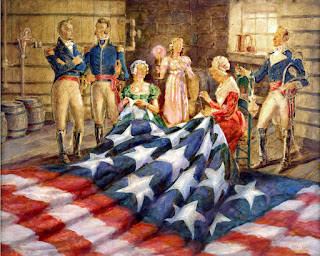Anasayfa > Site Haritası > Tarih Notları > Bayram Hoca Tarih Notları > > History of American History
Mike Wallace's Mickey Mouse History: And Other Essays on American Memory can essentially be called a history of American History. He takes a look into how we as a culture have remembered our beginnings through the years. From the small historical houses of the late 19th century to the historical villages created by corporate moguls in the 1920's. Wallace gives an in depth history of the museum culture in our country. He has an opinion on every venue he mentions and most include advice on how to improve the experience. Wallace actually comes across as quite condescending in most sections.
The first part of remembering our history started in the mid to late 19th century. Before there were any large Smithsonian Museums, there were historical sites. Most quite small, like houses founding fathers grew up in, but some were of a larger variety, like Civil War battlefields. George Washington's revolutionary headquarters became the first historical house in the US, in 1850. Three years later Washington's residence of Mount Vernon followed. The movement to preserve these historical sites was lead (maybe surprisingly) by the women of the country (I say surprisingly due to the time era). During her efforts to save Mount Vernon, Ann Pamela Cunningham formed the Mount Vernon Ladies Association as a support group for the cause. Other groups formed, such as the Daughters of the American Revolution and the Mayflower Decedents, all aimed at preserving America's past. It wasn't until the turn of the 20th century however that things really got rolling.
The new century brought with it an economic boom and an increase in leisure time. Part of this was due in large part to the personal automobile. Henry Ford had more money than he knew what to do with and after World War 1, a desire to return to the "good ole days". Ford began to collect pieces of Americana from across the country and soon had quite the collection. He decided to put it on display and created the first open air museum in our country, Greenfield Village. Ford flew in parts of his collection, as well old style shops and buildings, and created his own "utopia". Greenfield Village was a 19th century small town that paid homage to the working class. Ford loved this place so much that it became his get away from a world he had learned to despise. The attraction still exists and information can be found on their website.
Another corporate big shot to get in on historical preservation was John D. Rockefeller Jr. He matched Ford's village with a village of his own, Colonial Wiliamsburg. A Wiliamsburg civilian came to Rockefeller hoping he could help preserve the rich history of the former Virginia capital. Rockefeller had helped fund similar projects outside the country, including several sites in France. In the late 1920's he began reconstructing the village as it was during the days Washington, Jefferson, Madison, etc walked it's streets. Currently Colonial Wiliamsburg is one of the most popular historical attractions in our country.
The Great Depression brought on a new era of preservation. With FDR's New Deal in place a couple new agencies were set to work searching for history across the country. The Historic American Building Survey (HABS) was a collection of architects sent out to find any building in America with historical importance and mark it as such. The HABS surveyed 6389 historical sites that varied from churches, taverns, schoolhouses, and barns. Another agency created in the New Deal was the Works Progress Administration (WPA). This was a group of writers and historians that documented these new historical sites and created guide books and travel guides for them. Other groups included the Civilian Conservation Corps and the Historical Records Survey. Much of this work however came to end with the impending World War on the horizon.
America's greatest historical city has to be New York. Its the economic capital of the US and many influencial people and places have called it home. From the Harlem Renessiance to Tamany Hall to the New York Yankees (Man, that hurt to say). Organizations, like the New York Historical Society and Parks Service, have preserved much of this cities past and displays it in extravagant exhibits. Most notably is the venue of Ellis Island and the Statue of Liberty. For generations America has been known as the World's melting pot. Cultures come from far and wide all searching for the same thing, the American Dream. The symbolic center of this phenomena is Ellis Island. Millions of people has passed through it's doors and stood in awe at the beauty of MS. Liberty. The island has since been shut down and turned into a museum...well several museums. The venue contains three museums, one upstairs, one downstairs, and one on the main floor. The upstairs and main floor are the most popular, containing your stereotypical museum exhibits (artifacts, pictures, and instructional videos). The downstairs, however, contains in my opinion (and Wallace's) the most intriguing of the three. Downstairs you'll find a history of the "Peopling" in our country. It contains the history of the people that came and helped make New York become what it is today. From Africans to Europeans to Puerto Ricans, the Peopling exhibit delves into how each group that immigrated here (even the forced immigrations) made their mark on our society. Throughout the decades, Ellis Island has been the scene of a few historical society battles (the Parks Service is always fighting someone) and has been built up, torn down, and built up again. Of all the places Mike Wallace discusses New York and Ellis Island are the most intriguing and controversial historical stops to make in the US.
Kategoriler:
Tarih Notları, History, American History


